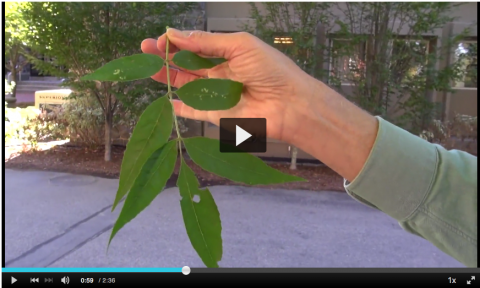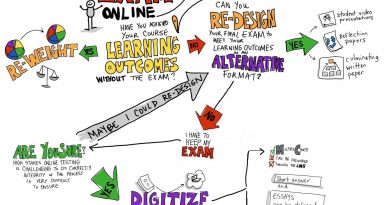Bringing Field Studies to Life in an Online Course
By Justin Lauzon, Sr. Educational Technology Specialist, Tufts Technology Services
Associate Professor George Ellmore is well known around campus for the passion he brings to the study of plant biology. He was also one of the first faculty to teach an online course during Summer Session. During the summer of 2016, Professor Ellmore debuted a number of instructional videos in his fully online course, Plants and Humanity (BIO10). The videos allowed him to supplement his existing online lectures with a variety of compelling field- and lab-based presentations that brought the course’s subject matter to life in vivid and engaging ways.
“I often take students to locations around the Medford campus where I can use the environment to illustrate concepts from the course” says Ellmore.
“Since my online students can’t be here on site, I decided to bring campus to them by recording the same type of presentation I might give outside of Ballou Hall. I even had an opportunity to record additional videos during recent trips to Tufts Biology field research sites in Hawaii and the Bahamas with the help of some of my students.”
In addition to field videos, Professor Ellmore recorded lab demonstrations on relatable topics such as the biology of premium whole-leaf tea and how yeasts can be used to brew ginger ale.
These supplementary videos proved to be a hit with students, many of whom had positive feedback, with some even likening the presentations to a virtual field trip.
“My students seem much more engaged this semester, and their grades appear to have improved as well.”
This impact was especially noticeable around a particular exam question addressed in one of the videos.
“In the past, maybe only a third of my students, online and on campus, would have identified critical leaf and branch positions correctly. This summer, all but one student was able to explain and apply the concept, essential for identifying tree species. I credit student success in large part to the availability of the live video demonstration on the topic.”
Although the BIO 10 videos were originally designed to be supplementary, the impact that a single presentation had on student success illustrates the breakthrough power that a small number of well-designed instructional videos can have on a class.
When asked what his goals are now that his videos have proven so successful, Professor Ellmore answered that he would like to shift gears and focus on other ways to improve student engagement.
“Next time the course runs online, I hope to rework some of my activities so that students have more opportunities to discuss the course topics and interact with one another. I wasn’t sure what kind of reaction to expect, and am thrilled that students have had such a positive reaction to the recordings, but I see this as the best way that I can help my students be more successful, in the short term.”
“Of course, I think these videos will also play a role in my on campus section of BIO 10, and I’m looking forward to sharing them with my spring students, particularly the Hawaii and Bahamas recordings.”
Professor Ellmore is just one of several instructors who have started integrating non-traditional video lectures into their online and on campus courses. Check this blog regularly in the coming months to read more of their stories.




